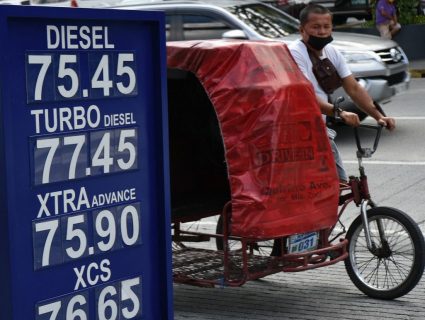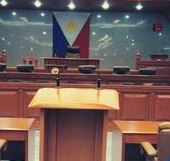P147 bilyon inaasahang makokolekta ngayong taon mula sa fuel tax


Sinabi ni Department of Finance (DOF) Secretary Carlos Dominguez III, na inaasahan ng gobyerno na makakokolekta ng P147 bilyon mula sa fuel tax ngayong taon, partikular ang P131.4 bilyong excise taxes at P15.8 bilyon mula sa VAT o value added tax.
Ang mga pondong magmumula sa mga nasabing buwis ay gagamitin para sa ‘Build, Build, Build” projects ng gobyerno, at para sa suweldo ng mga kawani ng pamahalaan, kabilang ang mga sundalo, mga guro at mga pulis.
Sinabi ni Dominguez, na ang pagsuspinde sa VAT ay mangangahulugan na ang nabanggit na mga pondo ay kailangan ding bawasan.
Ang pagsuspinde sa fuel excise tax ay mangangahulugan din na kailangang mangutang ng gobyerno ng dagdag na pondo para gugulan ang mga nabanggit.
Paliwanag ni Dominguez . . . “If we suspend this, and we don’t collect it, what will happen is our debt-to-GDP ratio will go up from an estimated 7.7 percent to 8.2 percent. And it will mean that if we — if we will continue to spend the same amount of money, we will have to borrow more money and the amount of — and that will bring up our debt-to-GDP ratio by — to about 61.4 percent.”
Sinabi niya na kung sususpindihin ang excise tax sa gasolina gaya ng nakasaad sa TRAIN Law, kung ang Dubai crude ay lumampas sa $80 per barrel, tanging ang top 10 percent ng income earners ang makikinabang dito.

Dagdag pa niya . . . “We have analyzed it and we know that the top 10 percent of income earners in the Philippines consume almost 50 percent of all the fuel. In other words, if we — and if we look at the top — bottom 50 percent of the Philippines, they only consume 13 percent of the fuel. So cutting the tax will benefit more the people who have cars and the other richer people. This situation would prove to be inequitable.”
Bago magkaroon ng TRAIN law, ang buwis sa gasolina ay P4.35 kada litro. Ito ay mula 2005 hanggang 2017. Walang buwis na ipinapataw sa diesel, kerosene at liquefied petroleum gas (LPG).
Noong 2017, inirekomenda ng ehekutibo na magpataw ang kongreso ng mga sumusunod na buwis: P10 kada litro sa gasolina; P6 kada litro para sa diesel; P5 kada litro sa kerosene; at P3 kada kilo ng LPG, na sinang-ayunan naman ng kongreso at naipatupad.
Ani Dominguez . . . “The reason we did this is because we needed funds for our Build, Build, Build Program and for our program, 10-Point Economic Program of the government. Remember that in 2017, in exchange for an increase in taxes, we also reduced the taxes to 99 percent of all the taxpayers. In fact, the result was each taxpayer, 99 percent of them got an average of one month’s salary for the year from the reduction of the tax. We increased the tax on fuel because we needed it for Build, Build, Build, and we reduced the taxes on the individuals who are earning a salary and we exempted taxes of anybody earning less than P250,000 a year. So we have to keep that in mind.”
Sinabi pa ng opisyal na ang pagbabawas ng excise tax sa gasolina ay mangangahulugan ng pagbabawas lamang ng P10 kada litro para sa gasolina.
Ang tumitinding tensyon sa pagitan ng Russia at Ukraine ay nagdulot ng pagtaas ng presyo ng langis. Ang pagtaas ng presyo noong Marso 15 ang pinakamataas sa taong ito, at ang ika-11 sunod na linggo ng pagtaas ng presyo.
Inirekomenda ni Dominguez ang pagbibigay ng karagdagang P200 buwanang subsidy para sa isang taon, para sa bottom 50% ng Filipino households bilang isang mas mahusay na alternatibo sa pagbawas ng fuel excise taxes.




